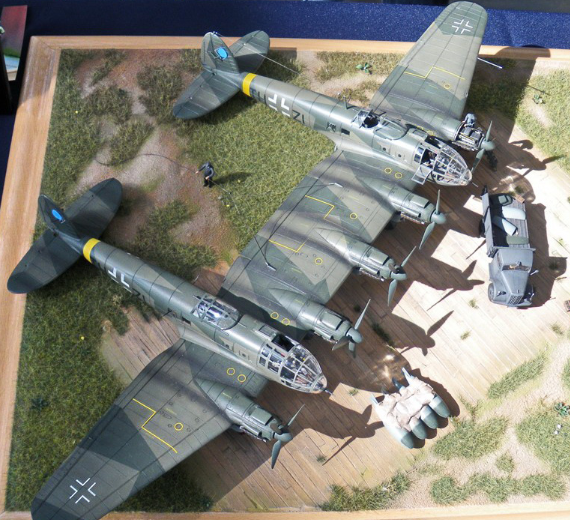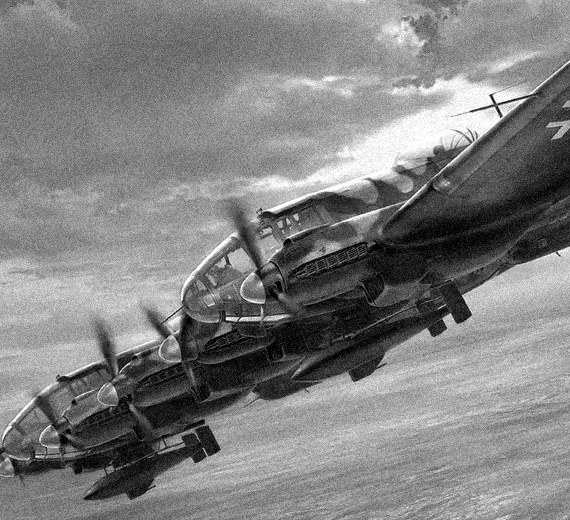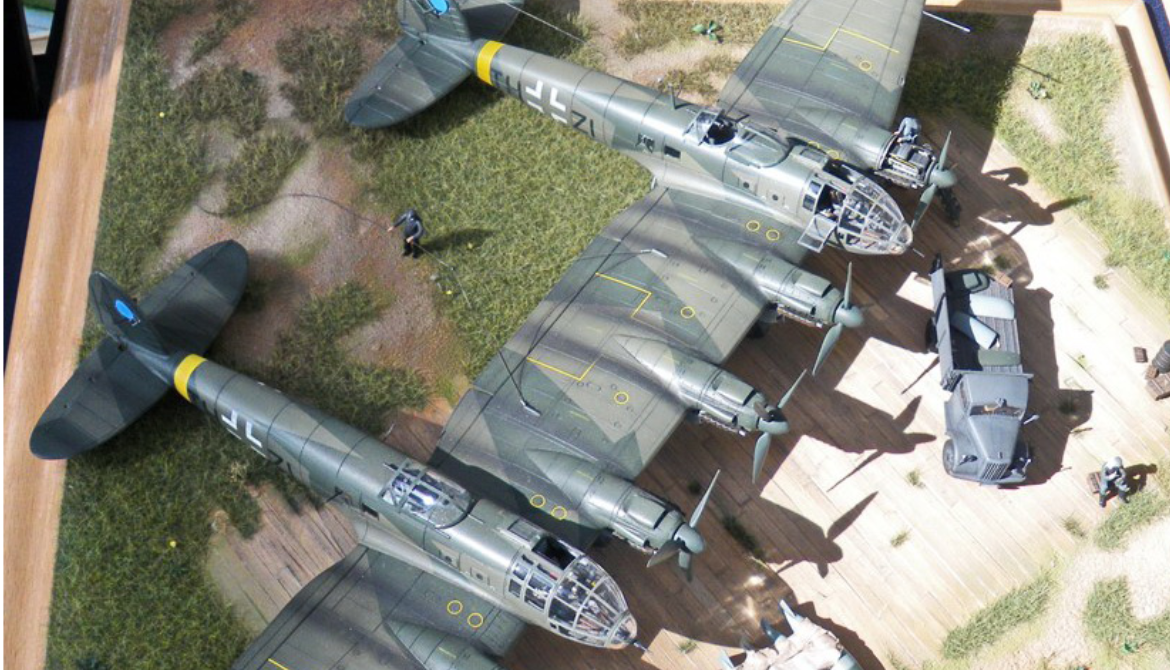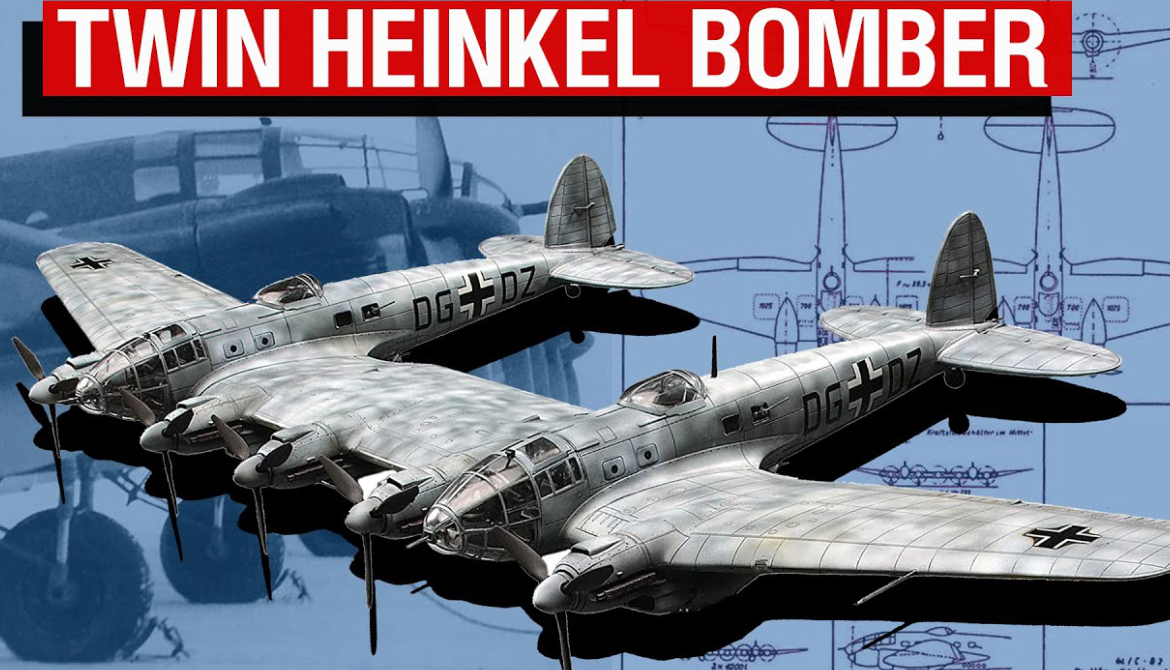Heinkel Flugzeugwerke Heinkel He-111Z "Twin"
Role Heavy bomber
Manufacturer Heinkel Flugzeugwerke
Designer Siegfried and Walter Günter
First flight 24 February 1935
Introduction 1935
Retired 1945 (Luftwaffe)
1958 (Spain)
Primary user Luftwaffe
Produced 1935–1944
Number built 32 prototype aircraft
12 civilian airliners
808 pre-war aircraft
5,656 aircraft (1939–1944)
Total: 6,508
Heinkel He-111Z 15 build
Variants CASA 2.111
.
History Heinkel Flugzeugwerke
Heinkel He-111Z Zwilling "Twin"

The He 111Z Zwilling (English: twin) was a design that mated two He 111s. The design was originally conceived to tow the Messerschmitt Me 321 glider. Initially, four He 111 H-6s were modified. This resulted in an aircraft with twin fuselages and five engines. They were tested at Rechlin in 1941, and the pilots rated them highly
A batch of ten were produced and five were built from existing H-6s. The machines were joined by a center wing formed by two sections 6.15 m (20.2 ft) in length. The powerplants were five Junkers Jumo 211F engines producing 1,000 kW (1,300 hp) each. The total fuel capacity was 8,570 L (1,890 imp gal; 2,260 US gal). This was increased by adding four 600 L (130 imp gal; 160 US gal) drop tanks..
Variants
He 111Z Zwilling "Twin"

The He 111Z Zwilling (English: twin) was a design that mated two He 111s. The design was originally conceived to tow the Messerschmitt Me 321 glider. Initially, four He 111 H-6s were modified. This resulted in an aircraft with twin fuselages and five engines. They were tested at Rechlin in 1941, and the pilots rated them highly.
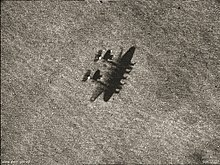
A batch of ten were produced and five were built from existing H-6s. The machines were joined by a center wing formed by two sections 6.15 m (20.2 ft) in length. The powerplants were five Junkers Jumo 211F engines producing 1,000 kW (1,300 hp) each. The total fuel capacity was 8,570 L (1,890 imp gal; 2,260 US gal). This was increased by adding four 600 L (130 imp gal; 160 US gal) drop tanks. The He111Z could tow a Gotha Go 242 or Messerschmitt Me 321 Gigant gliders for up to 10 hours at cruising speed. It could also remain airborne if the three central powerplants failed. The He 111 Z-2 and Z-3 were also planned as heavy bombers carrying 1,800 kg (4,000 lb) of bombs and having a range of 4,000 km (2,500 mi). The ETC installations allowed for a further four 600 L (130 imp gal; 160 US gal) drop tanks to be installed.
The He 111 Z-2 could carry four Henschel Hs 293 anti-ship missiles, which were guided by the FuG 203b Kehl III missile control system. With this load, the He 111Z had a range of 1,094 km (680 mi) and a speed of 314 km/h (195 mph). The maximum bombload was 7,200 kg (15,900 lb). To increase power, the five Jumo 211F-2 engines were intended to be fitted with Hirth TK 11 superchargers. Onboard armament was the same as the He 111H-6, with the addition of one 20 mm (0.79 in) MG 151/20 cannon in a rotating gun-mount on the center section.
0
KmCeiling
0
KmCombat RANGE
0
Km/hAircraft Speed
0
Max Crew
Photo Gallery
Heinkel Flugzeugwerke
Heinkel He-111Z Zwilling "Twin"


Heinkel Flugzeugwerke
Heinkel He-111Z Zwilling "Twin"
Info He-111 H-6
-
-
- Crew: 5 (pilot, navigator/bombardier/nose gunner, ventral gunner, dorsal gunner/radio operator, side gunner)
- Length: 16.4 m (53 ft 10 in)
- Wingspan: 22.6 m (74 ft 2 in)
- Height: 4 m (13 ft 1 in)
- Wing area: 87.6 m2 (943 sq ft))
-
Powerplant
-
-
- Empty weight: 8,680 kg
- Gross weight: 12,030 kg
- Max takeoff weight: 14,000 kg
- Powerplant: 2 × Junkers Jumo 211F-1 or Junkers Jumo 211F-2 V-12 inverted liquid-cooled piston engines, 970 kW (1,300 hp) each (Jumo 211F-1)
-
-
- 1,000 kW (1,340 hp) (Jumo 211F-2)
-
-
Performance
- Maximum speed: 440 km/h
- Range: 2,300 km (1,400 mi,
- Service ceiling: 6,500 m
- Time to altitude: 5,185 m (17,011 ft) in 20 minutes
- Wing loading: 137 kg/m2 (28 lb/sq
- Power/mass: 0.161 kW/kg
Armament
-
-
Guns:
- up to 7 × 7.92 mm (0.312 in) MG 15 machine guns or 7x MG 81 machine gun (2 in the nose, 1 in the dorsal, 2 in the side, 2 in the ventral), some of them replaced or augmented by
- 1 × 20 mm (0.787 in) MG FF cannon (central nose mount or forward ventral position)
- 1 × 13 mm (0.512 in) MG 131 machine gun (mounted dorsal and/or ventral rear positions)
-
Bombs:
- 2,000 kilograms (4,400 lb) in the main internal bomb bay
- Up to 3,600 kilograms
-
Guns:
.
Links to Youtube & Others
The He 111Z's operational history was minimal. One machine was caught by RAF fighter aircraft over France on 14 March 1944. The He 111Z was towing a Gotha Go 242, and was shot down.[68] Eight were shot down or destroyed on the ground in 1944.
Heinkel Flugzeugwerke
Heinkel He-111Z "Twin"
The Z-3 was to be a reconnaissance version and would have had additional fuel tanks, increasing its range to 6,000 km (3,700 mi)

Youtube Link
The Z-3 was to be a reconnaissance version and would have had additional fuel tanks, increasing its range to 6,000 km (3,700 mi)
